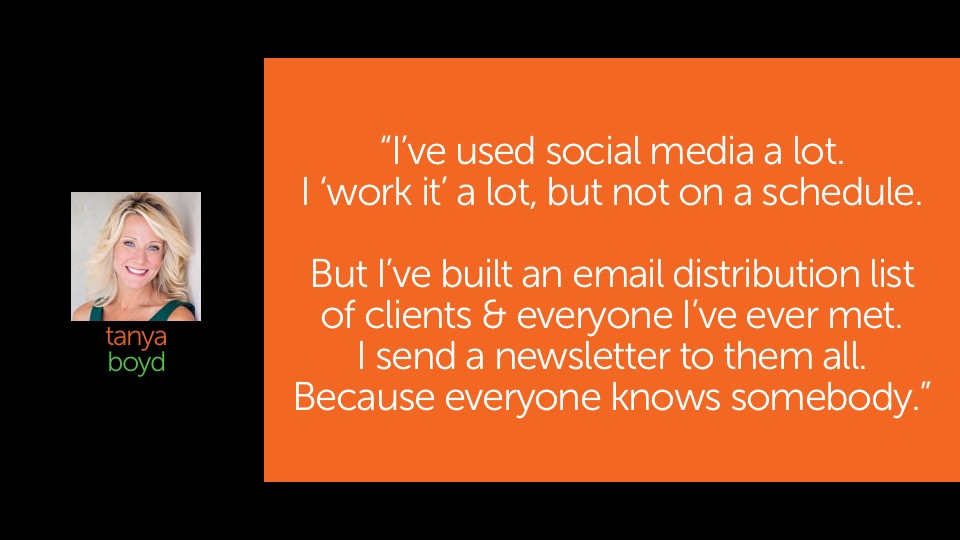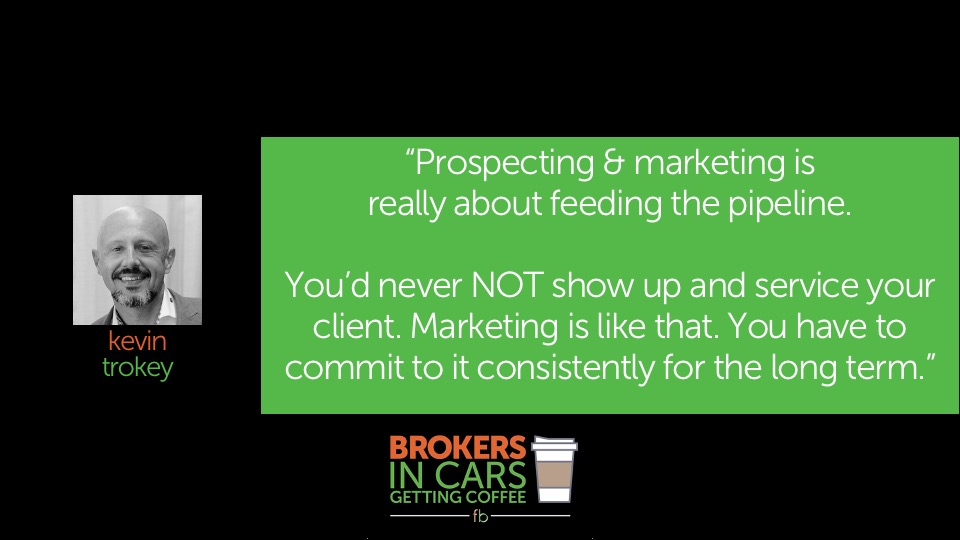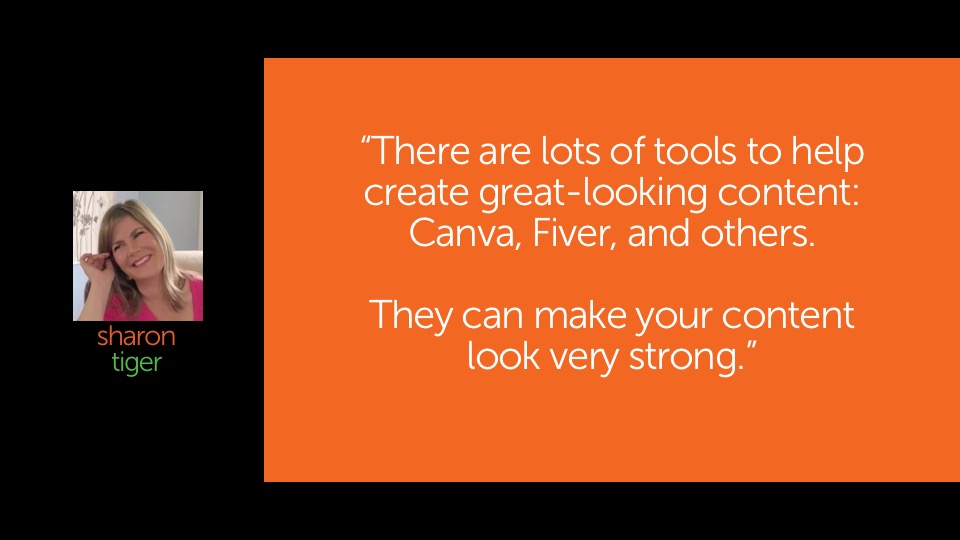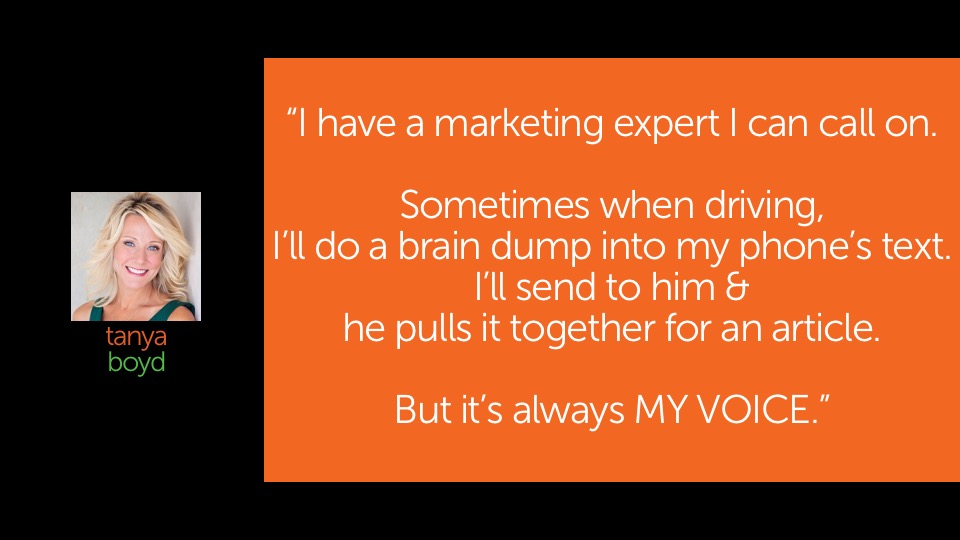Employee Benefits Professionals: 5 Digital Tips to Prospect & Sell Part 2
It’s a key time for employee benefit professionals to rethink how we approach prospecting, selling and retaining clients in a digital world.
In Part 1 of this article, we discussed the first two tips: 1) Define Your Audience, and 2) Share Valuable Content.
Without delay, let’s delve into the next 3 tips…
TIP 3: BE A PRO. LET IT SHOW.
We’re now six months into this remote-work environment. I’ve heard from some brokers who just paused their business at the start of the pandemic with the belief that “this will blow over quickly and then I can get back to normal in-person selling and servicing.”
If you haven’t admitted it yet, I’ll just say it: we might be working this way for another 12 or 18 months. Therefore, we have to figure out NOW how to be a professional in this work environment.
TRICK 1: Be the hardest working person in the room
What does a sales professional look like in this environment? Well, the core components of a sale haven’t changed. A salesperson still needs to…
- display confidence running a meeting
- present themselves professionally
- prepare for the discussion & great followup
However, these actions are handled a little differently today. I’m reminded of a statement from Mike Leary, the best sales trainer I’ve ever learned from: “The presenter needs to be the hardest-working person in the room.” He continually reminded us that as salespeople, it’s our job to do many things that are inconvenient for us but create a better experience for our client or prospect audience.
TRICK 2: Get professional at remote selling
Kevin Trokey always says, “Sales is a transfer of confidence.” In 2020, you don’t look confident if you can’t competently run a video meeting. Video conferencing is a necessary business tool - like voicemails, cell phones, and emails. You need it to thrive in this environment. You can’t do that if you’re fumbling around with the technology. Know how to turn on your camera (and do it), quickly mute and unmute your sound, and help your clients troubleshoot sound/video issues. And you have to effortlessly flex if (when) the technology fails in a given meeting. If you can’t do these things, get good at them - like, by the end of this week.
Remember back in the day if you were trying to book an in-person meeting and the prospect said, “You don’t have to drive across town to my office, we can just talk on the phone”? You would say, “It’s no problem. I’ll be there.” You did it because you knew the ability to transfer confidence and get results would be so much better if you could see the person eye-to-eye. In the same way, you should press to have a video-chat because it’s that much more engaging. Webex ran a study that showed a 20+% increase in close ratio if you turn on your video camera. The prospect can read your level of confidence when they see your eyes and your facial expressions.
Think about how much you prepared for an in-person meeting with your best prospect last year: hair styled, perfect outfit, accessories and shoes, deodorant, no spinach in your teeth. Are you preparing that much for today’s meetings? Or have you allowed yourself to be lax because of the more casual atmosphere of some Zoom calls when the other person’s dog or kid interrupts the meeting? That isn’t an excuse for you to show up with messy hair and a raggedy tank top. Remember your inconvenience versus their convenience. Be purposeful in your self-preparation – and celebrate the fact that it only matters above-the-waist today.
My last tidbit to show up like a professional is to prepare more for the discussion. You can’t just “wing it.” If you’ve done hundreds of in-person meetings, you might be comfortable reading the room, leading the conversation and drawing out the client’s needs. Some of that gets lost in a video call. You’ll probably have to work harder to draw out client issues. You’ll probably need more pointed questions. Prepare your audience in advance with a short video, an article or an infographic. Have content pieces at the ready to refer to as needed. Go back and read the list of bullets in Tip #2, Trick #1 How to Use Vendor Content. I’ve learned for a sales call to have a standard set of slides, but I often also have these assets at my fingertips: extra slides to help with FAQs, a video, a website, case studies, testimonials, etc. that I can quickly go to if the conversation needs it.
Trick 3: Video staging matters
The other side of preparation is preparing “the room.” You’re working from home, and maybe you need to also work around a spouse, kids, and even pets. But it doesn’t mean you don’t have options. Here’s a picture of me last month presenting NAHU’s 3-hour Single Payer Certification class. Notice the lighting, computer stand, background props (flags, money bag, chocolate coins), and of course a full pot of coffee.

A few key items to be aware of:
- Stage your background. Think like you’re preparing to run a newscast. Look at everything that’s in your frame behind you. Recently I was on a call with someone who sat on their unmade bed. If they had just brought in a chair and turned around, their background would have probably been a blank wall. Or better yet, a wall with a picture or a bookcase. You might prefer to show some personality of a room, or your office. But make a conscious decision. You can find a few appropriate locations in your home.
- Have good lighting. Way too many people turn on their video but still can’t be seen due to poor lighting. If people can’t see your expressions or your eyes, you’re missing an entire level of communication. You lose credibility to competitors who have learned this lesson. If your background has a window or a side window, if you have any shadows on your face from can lights that shine down, then you need to plan lighting on your face. Every photographer knows that great lighting makes us look younger and better. Use a lamp or buy a tripod and light (I like this one). If you wear glasses, get anti-glare lenses or position your lighting to limit the glare.
- Don’t look down on your audience. Speaking of looking our best – everyone looks better from eye-level or from above eye-level. However, most of our laptops sit on a desk below us, so our web-cams look up at our nostrils and double-chins. Not pretty. Set up a stack of books, a box, or buy a VariDesk or an adjustable stand (I like this one).
- Learn from experts. Check out this How to Look Good on Video Calls video with 3.5 million views for tips on lighting and staging that are especially practical.
Trick 4: Network differently
We all get spam marketing emails, LinkedIn messages and robocalls. It’s time to look for warm introductions. Because meeting strangers cold right now is difficult – and even colder when done remotely. Some tips…
- Go back to all your great clients and do what we know we should have done all along: ask for a referral, or better yet, an e-introduction to other potential clients who are like them.
- Tap you your vendors and others in your network.
- Make it easy on them by providing them copy for the introduction – what they should say about you.
In today’s environment, employers are scrambling for great advice. And while they’re not answering your cold call, they will usually respond to a well-timed warm introduction from someone they trust. Fernando Martinez has shifted his cold-calling routine and is seeing solid results. Click here to hear him share his experience in our “Brokers in Cars Getting Coffee” interview (4:07 minute mark).

Thinking about how to warm people up for an introduction, look back at Tip #2 Content Is King, Let It Reign. Good “content” is all about warming people up to your ideas. I know it takes more work. Recognize it’s about shooting for quality over quantity. Wendy Keneipp has a lot of background and experience with this kind of strategic selling. She shares her wisdom and explains it beautifully in this quick video.

For another piece chocked full of great selling tips, check out this Harvard Business Review article, How to Keep Closing B2B Deals During the Pandemic.
TIP 4: CONSISTENCY WINS. CONSISTENCY WINS.
We say it twice because it’s true – and it’s THAT important. Heidi Rasmussen advises, “Your goal is to get prospects into your ‘web’ and then CONSISTENTLY serve up GREAT content they care about, in CONSISTENT channels, with CONSISTENT messaging and branding.”
Habits matter in life, and in showing digital proof that you’re an expert. If you’ve never read The Slight Edge, I highly recommend this book about how to make DAILY choices that will lead you to results.
Trick 1: Less is more
Have you ever committed to a new stringent diet or workout plan (on Monday)? Inevitably, two weeks later there’s no evidence of it. The same happens with marketing and selling activities. We commit to post on LinkedIn twice a day, write an article every week, send a monthly email campaign. When the plan is too stringent, failure is imminent.
Before you sign up to do it all, take a breath. Pace yourself. Don’t bite off more than you can chew.
It’s far better to commit to a couple channels and to do it great, than it is to dabble with half a dozen. Over the past 6+ years, Tanya Boyd made a strong commitment to build her email distribution list that is now thousands strong and her strongest marketing channel.

Heidi says, “Choose a few things you KNOW you can accomplish daily, weekly, monthly. Then NEVER, EVER, EVER don’t do them.”
Trick 2: Decide how often
How often do you need to be out in front of your audience? Will you write a blog every week? Will you post something on LinkedIn once a week? Will you send an email to your clients every month? Whatever works for your schedule, plan it and stick with it.
Nancy Giacolone says she’s figured out a weekly outline that’s helped her, “My LinkedIn posts revolve around my own personal schedule and look something like this…
- Monday: motivational or inspiring
- Tuesday: Two Minute Tuesday video - generally around leadership and authenticity
- Wednesday: benefits-related content
- Thursday: benefits-related content
- Friday: lighter topics - often a ‘fun fact’ (since Wednesday and Thursday tend to be pretty hard hitting).”

Nancy told me she now gets new clients from LinkedIn. Do you think that seeing her post consistently for a year had an impact? I think so.
I like the way Kevin Trokey views consistency from the perspective of a sales pipeline. Click here to hear him share his experience in our “Brokers in Cars Getting Coffee” interview (3:22 minute mark).

Trick 3: Decide which channels
This is important, so don’t just stumble on to the channels you’ll use to sell and market to your prospects and clients. How do you choose? You go back to Tip #1 and determine where your ideal client hangs out. What will they read? Where might they trip across your content? What will attract them to you? Those channels are your highest priority.
Many different channels make up your digital footprint:
- Your website and SEO
- Social media profiles: LinkedIn, Twitter, Facebook, Instagram, Tinder, Snapchat…
- Social media posts and interactions: your Like, Comment and Share activity
- Advertising on social media
- Articles on your personal blog
- Articles where you were featured or quoted: industry publications, local and national papers or magazines, business journals, etc.
- Press releases announcing products, speaking engagements, awards, accomplishments (such as NAHU’s Soaring Eagle Award, etc.)
- Holding educational webinars, breakfasts or lunch and learns
- Creating videos or other content pieces
- Sending email newsletters or nurturing series
- ETC.
TIP 5: RIGHT PEEPS. RIGHT SEATS. NOTHING BEATS.
I know your next thought is, “I can’t do all this stuff by myself.” I never said you’d do it alone. You need help, regardless of your size.
Trick 1: Find external peeps
A great place to start was taking advice from this article. Look at how much brilliance is available out in the netherverse!
When Heidi left corporate America and joined me full time at freshbenies, she went from having hundreds of internal support people, to searching Google and a teeny budget. She started studying and hasn’t stopped. Here are her best suggestions to get you started…
Get scrappy about finding good people, apps and programs that can help you look more sophisticated than you are. Consider hiring a graphic designer, video editor, copy writer, article writer, social media coordinator, etc. If you need one, ask me.

Kevin Trokey and Wendy Keneipp started their company, Q4i, to coach brokers to up their game. Initially, they focused on the sales process. Over time, they saw that so many brokers needed significant support on marketing, they expanded their company to help. I highly suggest you follow their blogs and investigate their Peer Accountability & Coaching program, or their more-significant coaching service.
Trick 2: Develop internal peeps
As you grow, you’ll build expertise inside your company. Our suggestion is to be focused on the right skills, so you hire right. Non-marketers might think the kind of personality they’re searching for is an artistic, creative free spirit. The truth is a productive marketing coordinator has to manage and keep many plates spinning at the same time. A key trait you should look for is a very organized process-focused operator.
It’ll be your important job to help them understand your key audience (see Tip #1), show them examples of content you’ve created or that you believe will resonate with your key audience (see Tip #2), explain how you present yourself to your audience (see Tip #3), describe the channels that are most effective and your current activity level (See Tip #4). These are important business decisions and standards for you to set from the beginning – don’t leave this up to a novice you just hired.
Trick 3: Don’t outsource your voice
We see many people in our industry who just want to hire an outsourced marketer who will step in and take over their digital marketing. Unfortunately, the outsourced marketer doesn’t know anything about the employee benefits industry or the brokerage’s audience, brand, message, mission, vision, etc. – it culminates into a dismal failure.
You know your prospects. You know your clients. Remember how in Tip #1 you worked hard to be memorable in your approach? A brand-new internal or external marketing expert doesn’t know the “voice” you want to create. You can’t hand this off without closely managing the ideas and the tone they put out in your name. Tanya shares how she makes good use of her time, while keeping true to her brand voice.

Trick 4: Work your network
As benefits professionals, we have a network of peers that are learning these same lessons and figuring out how to successfully navigate our current environment.
There was a time when being an authority meant keeping success secrets to yourself. At some point in the last decade, that changed. In today’s economy, you’re influential as a thought leader by sharing your ideas.
Watch and learn from those who are already doing fantastic selling and marketing through digital channels you’re a part of. Reach out, ask questions and get advice. When you network at virtual conferences or in business mastermind groups, ask pointed questions about how people are getting warm connections these days.
Connect on social media with all the people named in this article - and interviewees from “Brokers in Cars Getting Coffee” (listed in Part 1).
Others worth watching for a broad set of “digital” approaches include: Eric Silverman, Megan Chiarello, Eric Bricker, David Saltzman, Paul Wilson, Martin Carr, Janet Trautwein, Brian Klepper, Adam Russo, Amy Evans, John Behn, Kevin Curran, Jessica Waltman, Rachel Miner, Andy Neary, Seth Denson. Consider joining a targeted group such as Susan Combs’ “Wonder Woman Mastermind Group” (yep – females only, guys).
Follow the freshbenies company page. Reach out to me, Heidi, Tonia Degner, Neil Kennish and Mandy Baker on our team, too.
Final trick!
When you reach out to any of these folks, don’t just click the “connect” button. Prove you’re not going to spam them by adding a note and say “Reid suggested I connect with you because you’re a thought leader. I’d like to watch and learn from you.”
Please email me at reid@freshbenies.com with your questions, stories, and ideas of what’s working this year to improve your digital marketing and selling.















